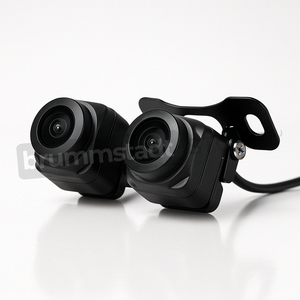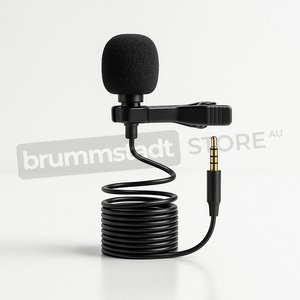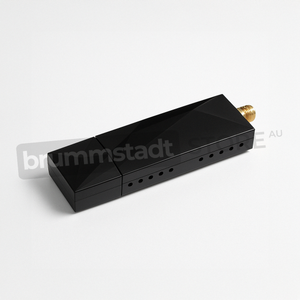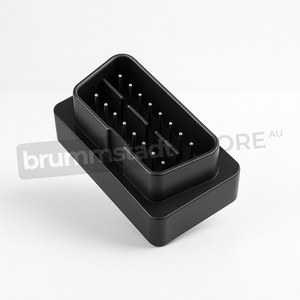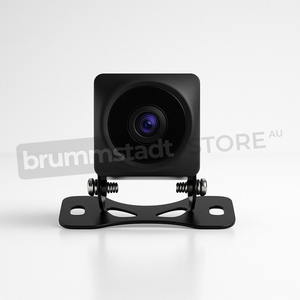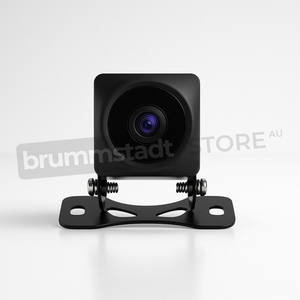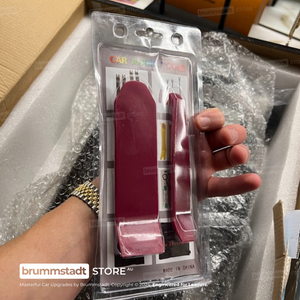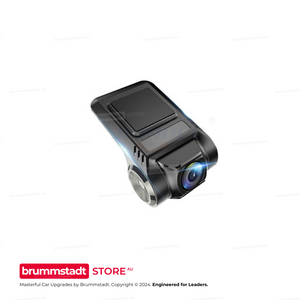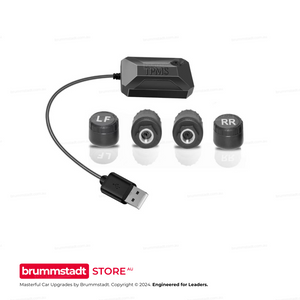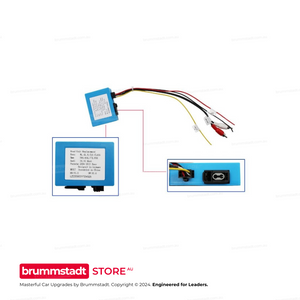Frequently Asked Questions
Everything you need to know about this head unit
Connect the single RCA cable with the yellow plug (included in your package) to extend your Bluetooth signal. This cable doubles as both a camera input AND a Bluetooth/WiFi antenna extension. The two small blue wires attached are antenna boosters that significantly improve connection stability. This simple connection takes 30 seconds and resolves 90% of Bluetooth issues. Make sure it's firmly connected even if you're not using a rear camera.
Try these proven solutions:
1. Quick Fix: Settings → Apps → Z-Link → Disable → Enable → Open (repeat each use)
2. Check Cables: Use the data/charge USB cable (not charge-only)
3. Bluetooth Setting: Disconnect all other Bluetooth connections - CarPlay needs exclusive access
4. Factory Reset Z-Link: Find the pink 'RESET' app, restart, reconnect Bluetooth, then try Z-Link
5. Sound Issues: Switch audio source to 'AUX' or 'USB/AUX' in your vehicle menu
Most issues are resolved with step 1 or 3!
The processor differs between models: The 2/32GB has a 4-Core processor, while 4/64GB and 8/128GB models feature the powerful 8-Core Cortex-A55 processor. Combined with RAM differences: The 2/32GB model with its 4-Core processor and limited RAM may experience slowdowns with heavy multitasking. The 4/64GB with 8-Core provides smooth performance for most users - no lag, seamless app switching, and enough storage for maps and music. The 8/128GB with 8-Core offers maximum performance with its generous RAM allowing unlimited multitasking and massive storage for extensive media libraries. Think of RAM like your desk space - more RAM means you can have more apps open simultaneously without slowing down.
Absolutely normal! These head units are complete replacement systems with their own GPS antenna, microphone, and Bluetooth module. Your factory connectors for these features won't be needed anymore. The important connections are: main power harness, speaker outputs, and the yellow RCA cable (even if not using a camera - it extends Bluetooth range). Any leftover factory plugs can be safely tucked away. If you're unsure about any connection, our support team is here 7 days a week.
Z-Link updates are handled through system firmware updates. Go to Settings → System → System Update. If an update is available, download it to a USB drive (FAT32 format) and install. Important: Never download Z-Link APKs from unofficial sources - they won't work and may cause issues. If you're having compatibility issues with newer iOS versions, the disable/enable workaround (Settings → Apps → Z-Link) usually resolves them while waiting for official updates.
Consider your usage:
• 2/32GB (4-Core): Budget option - fine for basic use, but may lag with multiple apps due to 4-Core processor and limited RAM
• 4/64GB (8-Core): Sweet spot - smooth Android Auto/CarPlay, multitasking, and ample storage
• 8/128GB (8-Core): Premium choice - unlimited multitasking, massive storage, future-proof for years
Most customers choose 4/64GB for the perfect balance of performance and value. The extra RAM makes a huge difference in daily smoothness!
The yellow RCA cable's blue antenna wires also boost WiFi signal! Make sure this cable is connected. Additionally, try these tips: Position the blue antenna wires away from metal surfaces, check that your phone's hotspot is set to 2.4GHz (not 5GHz) for better range, and ensure the head unit's WiFi sleep policy is set to 'Never' in Settings → WiFi → Advanced. For best performance with wireless CarPlay, keep your phone within 1-2 meters of the head unit.
Go to Settings → Sound → Equalizer and adjust to your preference. For more volume, increase the 'Loudness' setting. The 4/64GB and 8/128GB models have superior audio chips that provide cleaner, louder sound. If you have an amplifier, use the RCA outputs for best quality. Also check Settings → Factory Settings (password usually 126) → Audio settings for additional gain controls. Remember: higher-spec models (4GB+) include premium audio components for noticeably better sound.
Yes! Most vehicles work instantly. If not, use the steering wheel learning app: tap the steering wheel icon, press each button on your wheel, and assign functions. For newer vehicles with CANbus, we provide CANbus modules for automatic setup. Some vehicles may need the Key1/Key2 wires connected (usually included in our harness). If you're having trouble, let us know your exact vehicle model and we'll provide specific instructions.
We offer a 30-day return policy. If it doesn't fit or there's a compatibility issue, we'll work with you to resolve it. If you change your mind, a 20% restocking fee applies. Our team verifies compatibility before shipping to minimize issues. We provide installation support 7 days a week to help resolve any problems. With our 3-year warranty and Australian-based support, you can purchase with confidence. Full details in our Refund Policy.
Historical Journey of the Mercedes-Benz Sprinter:
1. First Generation Sprinter (T1N Series: 1995–2006):
Emerging in the mid-1990s, the initial series (T1N) debuted with an assertive push toward more modern, practical, and comfortable utility vehicles. Commercial users quickly adopted this model for its impressive payload capacities, fuel-efficient diesel engines, and comfortable, driver-focused ergonomics. Offered internationally with various body styles and chassis options—including panel vans, minibuses, cab configurations, and passenger-oriented designs—the first Sprinter became a familiar global sight. In the United States, it was introduced under separate branding, initially sold as the Freightliner Sprinter from 2001 and later as a Dodge Sprinter beginning in 2003, introducing many North American consumers to European-style van versatility.
2. Second Generation Sprinter (NCV3 Series: 2007–2018):
The arrival of the second-generation Sprinter (NCV3) represented significant advancement, redesigned with fresh styling, refined interiors, increased safety features, and enhanced engine options. This model established itself as an icon through a thoughtful blend of performance, comfort, and utility. Its varied configurations meant it effectively fulfilled diverse industrial, recreational, and passenger transport roles around the world. Available configurations—standard and high roofs, different wheelbases, and multiple seating arrangements—meant ample adaptability. In regions like Australia, Europe, and North America, the Sprinter NCV3 particularly earned a reputation as a dependable work van and a desirable conversion platform for campervan enthusiasts, due to its substantial cargo capacities, durable build quality, and comfortable, spacious cabin.
The NCV3 Sprinter era saw the introduction of powerful yet efficient diesel engines, often featuring both four-cylinder and standout six-cylinder variations—delivering remarkable torque, responsive acceleration, commendable towing abilities, and long-distance comfort. Its enduring popularity within various market segments is further underscored by exceptional reliability and occupant safety standards, incorporating advancements such as stability control, anti-lock braking systems (ABS), electronic brake force distribution (EBD), multiple airbags, and advanced traction control systems.
Integrating Modern Infotainment System Improvements—Brummstadt Head Unit:
A premium infotainment upgrade represents a meaningful investment for many Sprinter owners, responding to a widely acknowledged desire for improved connectivity, navigation accuracy, and multimedia capabilities beyond those originally provided by the factory-installed systems. The head unit upgrade kit developed by Brummstadt addresses this need directly, presenting an intuitive user interface designed specifically to integrate smoothly into the dashboard architecture of Mercedes-Benz Sprinter vans sold between the years 2007 and 2018.
Strategically integrated wired and wireless Apple CarPlay and Android Auto fundamentally transform the cabin experience, streamlining smartphone integration and giving access to familiar interface elements directly on the head unit's generously sized touchscreen display. Compatibility with highly regarded navigation applications—including Google Maps, WAZE, and Apple Maps—introduces elevated driving convenience and precise guidance, facilitating confident exploration even in unfamiliar settings or congested cityscape conditions.
Consider a scenario: departing a leisurely dinner with friends or family, with planned navigation already predetermined from the comfort of a restaurant table. Upon entry into the Sprinter, the intended route conveniently transitions via wireless Apple CarPlay or Android Auto directly onto clear, vibrant displays, delivering a relaxed, distraction-reduced driving experience without navigating through cumbersome setups or separate devices.
Additional upgrade options provided by Brummstadt's solution showcase driver-focused sophistication via dual 1080p high-definition (HD) front and rear camera integration capable of continuous recording, offering exceptional visibility enhancements plus an extra security dimension gained from clear documented journey footage. A further element of engaging passenger entertainment also distinguishes this head unit—enabling gameplay through joystick connections managed easily via USB ports, creating shared enjoyment and engaging routine journeys more actively.
Moreover, intelligent voice control integration significantly augments convenience and safety without driver distraction. In addition to standard voice-activated management of calls, navigation, messages, and music selections, this feature readily interfaces with smart home connectivity protocols, seamlessly interacting with virtual assistants such as Siri and Google Assistant. Before arriving home, occupants could issue simple commands thoughtfully prepared for domestic arrival, such as initiating porch lighting remotely, representing integrated intuitive usability enhancing daily routines and heightening perceived comfort and security.
Beneficial Advantages and Driving Satisfaction of the Sprinter NCV3 (2007–2018):
The enduring appeal of the Mercedes-Benz Sprinter NCV3 lies clearly in its strong synthesis of practical functionality, reliable mechanical foundations, refined ride quality, and thoughtfully engineered safety standards. Its flexible design—suitable equally to rigorous commercial demands, passenger transport conveniences, or personalized camper conversions—highlights Mercedes-Benz’s depth of innovation and engineering excellence. Powerful engine options, precise handling, comfort-oriented features, and robust chassis durability position the Sprinter as a unique, rewarding vehicle admired throughout its production timeline by both private and fleet operators.
Complementing the Sprinter's intrinsic strengths through modern technological and connectivity advancements extends and reinforces these notable attributes. Intelligent enhancements such as Brummstadt's sophisticated infotainment head unit implementation add significant improvement in practicality, navigation, passenger enjoyment, and safety confidence. These implementations notably refine daily vehicle interactions, demonstrating how thoughtfully chosen aftermarket systems transform routine driving into experiences marked by comfort, practicality, and memorable enjoyment.
Through ongoing ingenuity, adaptability, and enduring capability, the Mercedes-Benz Sprinter NCV3—supported thoughtfully by carefully considered technological integrations—continues representing both commendable automotive engineering practices and genuinely appreciated vehicles that reward ownership with deep satisfaction, versatility, and proven practicality worldwide.















